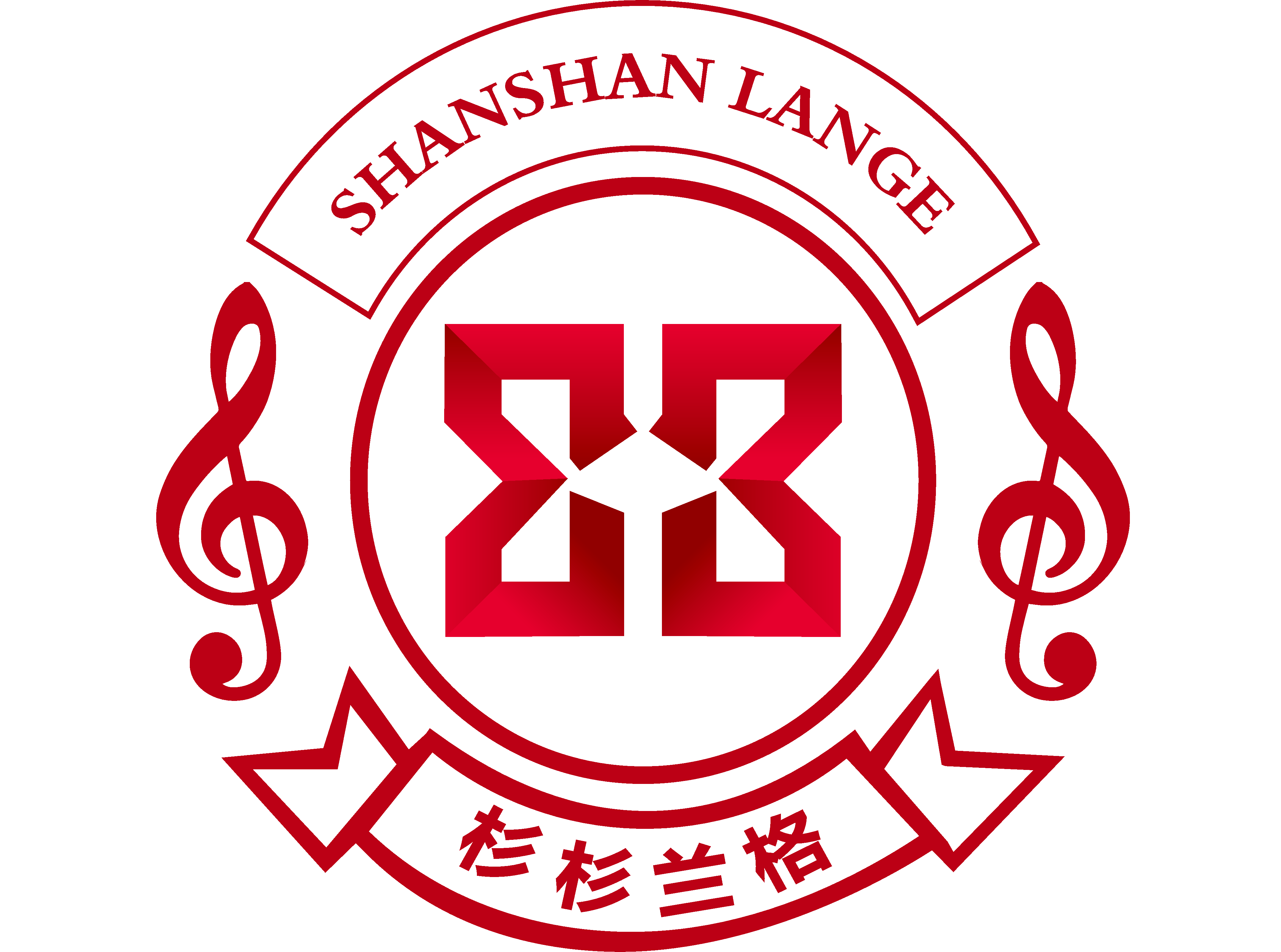春节返乡是否需要隔离?31个省市最新情况汇总
- 2021-01-14 15:45:04
- 点赞量:6958
- 点击量:118697
- 作者:秘书处Secretary's Office
(健康时报记者 赵萌萌 陈龙飞 郭凤羽)1月13日,按照网上售票提前30天的规定,旅客可开始购买除夕当日的火车票。但临近春节,国内疫情出现多点散发现象,“春节能否回家过年”、“异地回乡是否需要做核酸检测”、“中高风险地区回乡是否需要集中隔离”成为很多人关心的话题。健康时报记者致电全国各地疫情防控指挥中心,为大家一一进行了摸排和梳理。

北京
中高风险地区前往北京,需要集中隔离14天并且进行核酸检测,低风险地区人员需在京心相助app上面进行个人信息登记,与所在社区和单位提前联系。
天津
根据天津市疫情防控要求,低风险地区持天津市绿色健康码,体温正常并且向当地社区报备,中风险也需提供健康码绿码和7日内核酸检测阴性报告,联系当地社区进行报备,居家隔离14天。
河北石家庄
1月12日,河北省疫情防控发布会上要求,在环石家庄、邢台及藁城、南宫进出路口全部设立疫情管控站点,对车辆、人员实行双向劝返;其他乡村道路实行物理隔离,24小时巡查守护,确保车辆、人员不出村、不出县、不出市。在石家庄、邢台启动公安交警路面巡查机制,及时发现处置违规出行车辆、人员。
山西太原
山西太原疫情防控规定,如果从河北低风险地区返回,需携带7日内核酸检测阴性报告和14天自我监测,从其他地区低风险提供绿色健康码和行程码,还需向各城区报备。中风险地区返回需要14天居家隔离和2次核酸检测,从高风险区返回,实行14天集中隔离和2次核酸检测。
内蒙古呼和浩特
低风险地区人员到内蒙古呼和浩特,只需持健康码绿码即可通行,中风险地区要求核酸检测阴性报告和健康码绿码,高风险地区直接进行隔离,但要保证12月15日之后,未前往邢台市和石家庄市。
辽宁沈阳
沈阳针对高风险地区来访人员,严格实施14天集中隔离观察,期间每三天进行一次核酸检测,集中隔离解除后实施7天社区健康监测,对于北京市除重点区域外的地区,需要携带7日内的核酸检测阴性报告。
吉林长春
从低风险地区前往长春,需要向社区报备,听从社区工作人员安排。中风险地区需要居家隔离14天,并进行3次核酸检测。高风险地区人员具备居家隔离条件的、首先集中隔离14天,之后居家隔离7天,不具备居家隔离条件的集中隔离21天,均需进行4次核酸检测。
黑龙江哈尔滨
低风险地区人员到哈尔滨人员需持健康码绿码,以及向社区报备。中高风险地区人员需集中隔离14天,然后再实行7天居家隔离,期间会进行3次核酸检测。
上海
来自或者途经国内疫情高风险地区的返沪人员,要求14天集中隔离观察,进行两次核酸检测。中风险地区的返沪人员,需严格进行14天的社区健康管理,进行两次新冠病毒核酸检测。同时需要向所在地的社区进行报备。低风险地区人员返沪只需持有健康码绿码就可通行。
江苏南京
中风险地区人员到南京需要进行集中隔离,如果是北京朝阳区、顺义区中非中高风险地区的人员持7日内核酸检测阴性证明可通行。其他低风险地区人员持健康码绿码,体温正常即可畅行。
浙江杭州
低风险地区人员到杭州,持有杭州健康码绿码即可正常通行,中风险地区需持有7天内核酸检测阴性报告,高风险地区则需跟当地社区报备,还要进行7天动态监察。
安徽合肥
高风险地区回合肥需要集中隔离14天、且2次核酸检测均为阴性;中风险地区需要在社区集中管理隔离、2次核酸检测均为阴性;低风险地区回合肥,若是当地有本土确诊病例的,需要持3日内核酸阴性证明,若是无本土确诊病例的,只需要出示健康码绿码。
福建福州
中、高风险地区人员倡议不返乡,若返乡需要定点集中隔离14日;低风险地区人员来福州只需要提供健康码绿码。
江西南昌
中、高风险地区人员,需要手机关注南昌发布,注册后凭健康码出行;同时需要提供7天内核酸阴性证明,并提前向社区报备。低风险地区人员只需要健康码绿码、手机报备即可通行。
山东济南
对于中、高风险地区来济南人员,实行“2+1+7”政策,即2次核酸检测 、间隔24小时;1次血清抗体检测;7天居家健康监测。对于中高风险地区以外的疫情重点地区,进行1次核酸检测。离开重点地区7日以上且持有7日内核酸检测阴性报告的人员,视同本地检测,可不再进行检测;低风险地区人员,持山东健康码绿码即可通行。
河南郑州
中高风险地区入郑人员,个人健康码标记为红码、一律实行“集中隔离14天+2次核酸检测+1次血清检测”措施,费用自理。隔离期满且检测结果无异常的,出具解除隔离单,个人健康码调整为绿码,方可正常有序流动。检测结果异常的,按相关规定落实管控措施。
低风险地区人员需出示健康码绿码,无需隔离,无需核酸检测。
湖北武汉
中高风险地区返汉人员需要集中隔离14天,并进行2次核酸和1次抗体检测。低风险地区返汉过春节的人员,全部要持7天内核酸检测阴性证明,体温正常且持健康码绿码和通信行程卡,可以通行。
湖南长沙
高风险地区人员,要集中隔离14天,并进行2次核酸检测;中风险地区并持有7天内核酸检测阴性证明的无异常情况人员,可正常出行;低风险地区,持健康码绿码即可通行。
广东广州
高风险地区集中隔离观察14天,隔离期间,第1、第14天做新冠病毒核酸检测;中风险地区视具体情况实行居家隔离,抵达当日进行核酸检测;低风险地区持粤康码或穗康码绿码通行,主动向单位或社区报备。
广西南宁
高风险地区人员须实行14天集中隔离医学观察;中风险地区人员须实行14天居家医学观察;低风险地区人员,14天内没有中、高风险地区旅居史的持两地健康码绿码,体温检测正常的即可通行,无需隔离。
海南海口
高风险地区人员需要14天医学观察,费用自理。中风险地区人员,需凭7天内有效的核酸检测阴性证明通行,无核酸检测证明的,需要集中隔离进行核酸检测。低风险区人员需要体温检测、查验健康码和查询个人活动轨迹,不需隔离。
重庆
来自中高风险地区,需提供7天核酸检测阴性证明、健康码绿码和体温正常者,若未持有以上资料,则需要在当地接受测核酸或者14天隔离。低风险地区的人员只需健康码绿码即可正常通行。
四川成都
中高风险地区人员到成都,需进行14天集中隔离和进行2次核酸检测,来自北京朝阳、顺义区等存在疫情的低风险地区,需要提供7天核酸检测阴性报告,若其他低风险地区人员只需持有健康码绿码和向社区报备。
贵州贵阳
来自中高风险地区,需14天集中隔离和14天居家隔离,并进行4次核酸检测,来自低风险地区持有绿色健康码和体温正常即可。若所在城市有确诊病例,需进行一次1次核酸检测,未出结果不得擅自走动。
云南昆明
低风险地区持有健康码绿码即可正常通行,中风险地区入昆返昆人员,且持有健康码绿码或健康证明的予以放行,不提供健康码绿码或健康证明的,经一次核酸检测阴性后,予以放行。高风险地区的人员,集中观察14天,两次核酸检测阴性后,解除隔离予以放行。
西藏拉萨
中高风险地区来拉萨需持健康通行码绿码,且持3日内核酸检测阴性报告,并做分流登记核查行程,如出入过风险地需要隔离;如无出入过风险地需要签署承诺书可自由流动。低风险地区需持健康通行码绿码,且持3日内核酸检测阴性报告,在测温正常且做好个人防护的前提下可自由流动。
陕西西安
来自中高风险地区,提前3天向社区(村)报备,进行集中隔离14天,开展2次核酸检测;
低风险地区,积极配合进行14天健康监测,至少做1次核酸检测。
甘肃兰州
低风险地区到甘肃的人员持甘肃绿码即可通行,中风险地区人员则需持有3天内核酸检测阴性证明和绿色健康码,同时居家隔离14天。高风险地区需要集中隔离14天,隔离期间需要至少2次核酸检测。
青海西宁
低风险区且未经过中、高风险区的入宁人员,需要出示绿色健康码,中、高风险区入宁人员及经过中、高风险区的入宁人员需要提供绿色健康码、7天内有效核酸检测阴性报告,抵达西宁后需要主动向社区或酒店报备并配合隔离14天。
宁夏银川
中高风险地区人员,严格落实查验3天以内核酸检测阴性证明,同时实施7天居家健康监测和2次核酸检测措施,低风险地区凭借健康码和行程码绿码通行。
新疆乌鲁木齐
从河北、辽宁返回乌鲁木齐需要隔离; 从北京返回乌鲁木齐的人员,落地后须统一接受核酸检测。除密接等特殊人员外,检酸检测合格正常的,如有顺义区旅居史的,须集中隔离。顺义区以外的人员,由所在社区接管,签订相关告知书,按时进行核酸检测,至于是否居家隔离,由社区根据具体情况研判。
此外,从黑龙江疫区城市、内蒙古满洲里来乌返乌人员也需要隔离。除以上地区以外,其他地区的人员凭畅行码、健康码的绿码可正常通行。同时最好备上7天之内的核酸检测证明。另上海、天津在内的游客,可凭畅行码、健康码绿码通行。目前已解除青岛、成都来乌的隔离规定。
在1月13日下午国务院联防联控机制召开新闻发布会,会上中国疾控中心副主任冯子健表示,春节期间,人员流动大,将增加疫情传播风险;同时,春节期间的物流也加大,低温条件下确实需要警惕进口冷链食品和其他货物被病毒污染引起输入疫情的风险。为了应对风险,国家已经部署了今冬明春防止疫情反弹的各项措施,落实好这些措施就可以确保不发生、不出现大规模的疫情反弹。
国家卫生健康委疾控局监察专员王斌表示,春运的疫情防控是目前疫情防控面临的一次“大考”。做好春运的疫情防控工作,其实最主要的措施就是反复强调、反复要求,要落实常态化疫情防控的工作。落实冬季一系列的防控工作,最重要的是要落实“四方”责任:一是落实属地责任,二是落实部门责任,三是落实单位责任,四是落实个人责任。呼吁广大公众春运期间要尽量做到非必要不出行,如果一定要出行,要关注交通旅游信息,同时还要注意错峰出行,全程做好防护,尽量避免去人多的密集场所。
英文直译
English literal translation
(Health Times reporter Zhao Mengmeng, Chen Longfei and Guo Fengyu) on January 13, according to the rule of online ticketing 30 days in advance, passengers can start to buy train tickets on New Year's Eve. However, as the Spring Festival approaches, the epidemic situation in China appears to be sporadic. Many people are concerned about whether or not to go home for the Spring Festival, whether or not to do nucleic acid testing when returning home from other places, and whether or not to concentrate on isolation when returning home from high-risk areas. The reporter of health times called the epidemic prevention and control command centers all over the country to sort out the situation one by one.
Beijing
If the medium and high-risk areas go to Beijing, they need to be isolated for 14 days and tested for nucleic acid. The personnel in the low-risk areas need to register their personal information on the Jingxin help app and contact their communities and units in advance.
Tianjin
According to the requirements of epidemic prevention and control in Tianjin, low-risk areas hold Tianjin green health code, whose body temperature is normal and report to the local community. Medium risk areas also need to provide health code green code and nucleic acid test negative report within 7 days, contact the local community for reporting, and isolate at home for 14 days.
Shijiazhuang, Hebei
On January 12, Hebei Province's epidemic prevention and Control Conference required that epidemic control stations should be set up at all the entrances and exits around Shijiazhuang, Xingtai, Gaocheng and Nangong to persuade vehicles and personnel to return in two directions; other rural roads should be physically isolated and guarded for 24-hour inspection to ensure that vehicles and personnel do not leave the village, county or city. In Shijiazhuang and Xingtai, the road patrol mechanism of public security traffic police was launched to timely detect and dispose of illegal vehicles and personnel.
Taiyuan, Shanxi
According to the epidemic prevention and control regulations in Taiyuan, Shanxi Province, if you return from low-risk areas in Hebei Province, you need to carry the nucleic acid test negative report within 7 days and self-monitoring within 14 days, provide the green health code and travel code from other low-risk areas, and report to the urban areas. It takes 14 days of home isolation and two nucleic acid tests to return from medium risk areas, and 14 days of centralized isolation and two nucleic acid tests to return from high risk areas.
Hohhot, Inner Mongolia
Personnel from low-risk areas can pass through Hohhot with green health code, while those from medium risk areas require negative nucleic acid test report and green health code, while those from high-risk areas are directly isolated, but they should not go to Xingtai and Shijiazhuang after December 15.
Shenyang, Liaoning
Shenyang strictly implements 14 days of centralized isolation and observation for visitors from high-risk areas. During this period, nucleic acid testing is carried out every three days. After the removal of centralized isolation, community health monitoring is carried out for 7 days. For areas except key areas in Beijing, nucleic acid testing negative reports within 7 days are required.
Changchun, Jilin
When going to Changchun from low-risk areas, we need to report to the community and listen to the arrangement of community staff. In the medium risk area, the patients need to be isolated at home for 14 days and tested for nucleic acid three times. In high-risk areas, those who have the conditions of home isolation need to be isolated for 14 days, then for 7 days, and those who do not have the conditions of home isolation need to be isolated for 21 days.
Heilongjiang Harbin
Personnel from low-risk areas who come to Harbin should hold the green code of health code and report to the community. Personnel in medium and high risk areas should be isolated for 14 days, and then be isolated at home for 7 days. During this period, nucleic acid testing will be carried out for 3 times.
Shanghai
Those returning to Shanghai from or through high-risk areas of domestic epidemic situation are required to be isolated and observed for 14 days and tested for nucleic acid twice. For those returning to Shanghai in medium risk areas, 14 days of community health management and two times of nucleic acid detection of new coronavirus were required. At the same time, it needs to report to the local community. People from low-risk areas only need to hold the green code of health code to go back to Shanghai.
Nanjing, Jiangsu
Personnel from medium risk areas need to be centrally isolated in Nanjing. If they are from medium and high risk areas of Central Africa in Chaoyang District and Shunyi District of Beijing, they can pass with the nucleic acid test negative certificate within 7 days. People in other low-risk areas can walk freely when their body temperature is normal with green health code.
Hangzhou, Zhejiang
When people from low-risk areas come to Hangzhou, they can pass normally with Hangzhou health code and green code. In medium risk areas, they need to hold nucleic acid test negative report within 7 days. In high-risk areas, they need to report with local community and conduct dynamic monitoring for 7 days.
Hefei, Anhui
In high-risk areas, turn fertilizer needs to be isolated for 14 days, and the two nucleic acid tests are negative; in medium risk areas, turn fertilizer needs to be managed and isolated in the community, and the two nucleic acid tests are negative; in low-risk areas, turn fertilizer needs to hold the nucleic acid negative certificate within 3 days if there are local confirmed cases, and only need to show the Health Code Green code if there are no local confirmed cases.
Fuzhou, Fujian
People from medium and high-risk areas are advised not to return to their hometown. If they return to their hometown, they need to be isolated for 14 days; people from low-risk areas only need to provide health code green code when they come to Fuzhou.
Nanchang, Jiangxi
People in medium and high-risk areas need to pay attention to Nanchang release by mobile phone, travel with health code after registration, and provide nucleic acid negative certificate within 7 days, and report to the community in advance. People in low-risk areas only need health code, green code and mobile phone report to pass.
Jinan, Shandong
The policy of "2 + 1 + 7" is implemented for the personnel from medium and high risk areas in Jinan, that is, two nucleic acid tests with an interval of 24 hours; one serum antibody test; seven days of home health monitoring. For the key epidemic areas other than medium and high-risk areas, nucleic acid testing was conducted once. The personnel who have left the key areas for more than 7 days and hold the nucleic acid test negative report within 7 days can be regarded as local test, and can no longer carry out the test; the personnel in low-risk areas can pass with the green code of Shandong health code.
Zhengzhou, Henan
In the medium and high-risk areas, the personnel entering Zhengzhou should be marked with red code for personal health code, and the measures of "centralized isolation for 14 days + two nucleic acid tests + one serum test" should be implemented, and the expenses should be borne by themselves. If the isolation period has expired and the test results are normal, the isolation release form shall be issued, and the personal health code shall be adjusted to green code before the normal and orderly flow. If the test results are abnormal, the control measures shall be implemented according to relevant regulations.
Personnel in low-risk areas need to show the green code of health code without isolation or nucleic acid detection.
Wuhan, Hubei
The returnees from medium and high risk areas need to be isolated for 14 days and tested twice for nucleic acid and antibody. All those returning to Han for Spring Festival in low-risk areas should hold the negative nucleic acid test certificate within 7 days, have normal body temperature, and hold the green code of health code and communication itinerary card.
Changsha, Hunan
Personnel in high-risk areas should be isolated for 14 days and tested for nucleic acid twice; personnel in medium risk areas with negative nucleic acid test certificate within 7 days can travel normally; personnel in low-risk areas can pass with green health code.
Guangzhou, Guangdong
The high-risk areas were isolated and observed for 14 days. During the isolation period, nucleic acid detection of new coronavirus was carried out on the first and the 14th days; the medium risk areas were isolated at home according to the specific situation, and nucleic acid detection was carried out on the day of arrival; the low-risk areas carried the green code of yuekang code or suikang code, and actively reported to the unit or community.
Nanning, Guangxi
The personnel in high-risk areas shall be subject to 14 days of centralized isolation medical observation; the personnel in medium risk areas shall be subject to 14 days of home medical observation; the personnel in low-risk areas who have no history of living in medium and high-risk areas within 14 days shall hold the green code of the health code of the two places, and those with normal body temperature can pass without isolation.
Hainan Haikou
Personnel in high-risk areas need 14 days of medical observation at their own expense. Personnel in medium risk areas shall pass by the valid nucleic acid test negative certificate within 7 days, and those without nucleic acid test certificate shall be subject to centralized isolation for nucleic acid test. Personnel in low-risk areas need temperature detection, health code check and personal activity track query, without isolation.
Chongqing
Those who come from medium and high risk areas and need to provide 7-day nucleic acid test negative certificate, Health Code Green code and normal body temperature. If they do not have the above information, they need to accept nucleic acid test or isolation for 14 days. People in low-risk areas only need health code and green code to pass normally.
Chengdu, Sichuan
Personnel from medium and high risk areas need 14 days of centralized isolation and two nucleic acid tests when they come to Chengdu. Personnel from low risk areas such as Chaoyang and Shunyi District of Beijing need to provide 7 days of negative nucleic acid test report. If personnel from other low risk areas only need to hold the green code of health code and report to the community.
Guiyang, Guizhou
For those from medium and high-risk areas, they need 14 days of centralized isolation and 14 days of home isolation, and four nucleic acid tests. For those from low-risk areas, they can hold the green health code and have normal body temperature. If there are confirmed cases in the city, a nucleic acid test should be carried out, and no one is allowed to walk around without results.
Kunming, Yunnan
In low-risk areas, people with green health code can pass normally. In medium risk areas, people who come back to Kunming and have green health code or health certificate will be released. Those who do not provide green health code or health certificate will be released after a negative nucleic acid test. The personnel in high-risk areas were observed for 14 days. After the nucleic acid test was negative twice, the isolation was released.
Tibet Lhasa
In the medium and high-risk areas, they need to hold the green code of health pass code and the negative nucleic acid test report within 3 days, and make the flow registration and verification trip. If they have been in or out of the risk areas, they need to be isolated; if they have not been in or out of the risk areas, they need to sign a letter of commitment to flow freely. Low risk areas should hold the green code of health pass code and the negative report of nucleic acid test within 3 days. They can flow freely under the premise of normal temperature measurement and good personal protection.
Xi'an, Shaanxi
For those from medium and high risk areas, they report to the community (Village) 3 days in advance, conduct centralized isolation for 14 days, and carry out nucleic acid detection twice;
In low-risk areas, actively cooperate with 14 days of health monitoring, at least one nucleic acid test.
Lanzhou, Gansu
Personnel from low-risk areas to Gansu can pass by with Gansu green code, while personnel from medium risk areas need to hold nucleic acid test negative certificate and green health code within 3 days, and be isolated at home for 14 days. High risk areas need to be isolated for 14 days, and at least two nucleic acid tests are needed during isolation.
Xining, Qinghai
The personnel entering the low-risk area and not passing through the medium and high-risk areas need to show the green health code. The personnel entering the medium and high-risk areas and passing through the medium and high-risk areas need to provide the green health code and effective nucleic acid test negative report within 7 days. After arriving in Xining, they need to take the initiative to report to the community or hotel and cooperate with isolation for 14 days.
Yinchuan, Ningxia
The personnel in medium and high risk areas should strictly check the nucleic acid test negative certificate within 3 days, at the same time implement 7-day home health monitoring and 2 times nucleic acid test measures, and the low-risk areas should pass by the green code of health code and travel code.
Urumqi, Xinjiang
Those who return to Urumqi from Hebei and Liaoning need to be isolated; those who return to Urumqi from Beijing need to receive nucleic acid testing after landing. In addition to the special personnel such as close contact, those who pass the acid test and are normal, and those who have a history of sojourning in Shunyi district should be isolated in a centralized way. People outside Shunyi District will be taken over by their communities, sign relevant notices, and conduct nucleic acid testing on time. As for whether they are isolated at home, the community will study and judge according to the specific situation.
In addition, people who came to and returned to Ukraine from cities in Heilongjiang epidemic area and Manzhouli in Inner Mongolia also need to be isolated. In addition to the above areas, people in other areas can pass normally with the green code of traffic code and health code. At the same time, it is better to prepare the nucleic acid test certificate within 7 days. In addition, tourists in Shanghai and Tianjin can pass by the free flow code, health code and green code. At present, the isolation regulations of Qingdao and Chengdu have been lifted.
On the afternoon of January 13, the joint prevention and control mechanism of the State Council held a press conference, at which Feng Zijian, deputy director of the China Center for Disease Control and prevention, said that during the Spring Festival, the large flow of people will increase the risk of epidemic transmission; at the same time, the logistics during the Spring Festival will also increase, and it is necessary to guard against the risk of imported cold chain food and other goods contaminated by virus under low temperature conditions. In order to cope with the risks, the state has deployed various measures to prevent the rebound of the epidemic this winter and next spring, and the implementation of these measures can ensure that there will be no large-scale rebound of the epidemic.
Wang Bin, inspector of the National Bureau of disease control and prevention of the National Health Commission, said that the prevention and control of the epidemic situation during the Spring Festival is a "big test" faced by the current epidemic prevention and control. In fact, the most important measure to do a good job in the prevention and control of the epidemic situation in the Spring Festival transportation is to repeatedly emphasize and ask for the implementation of the normalization of the prevention and control of the epidemic situation. To implement a series of winter prevention and control work, the most important thing is to implement the "Four Party" responsibility: first, to implement territorial responsibility, second, to implement department responsibility, third, to implement unit responsibility, fourth, to implement individual responsibility. Appeal to the general public during the Spring Festival travel to try not to travel unnecessarily, if you have to travel, you should pay attention to the traffic and tourism information, at the same time, you should pay attention to off peak travel, do a good job in the whole process of protection, try to avoid going to crowded places.






0 条 评 论 Write a Response